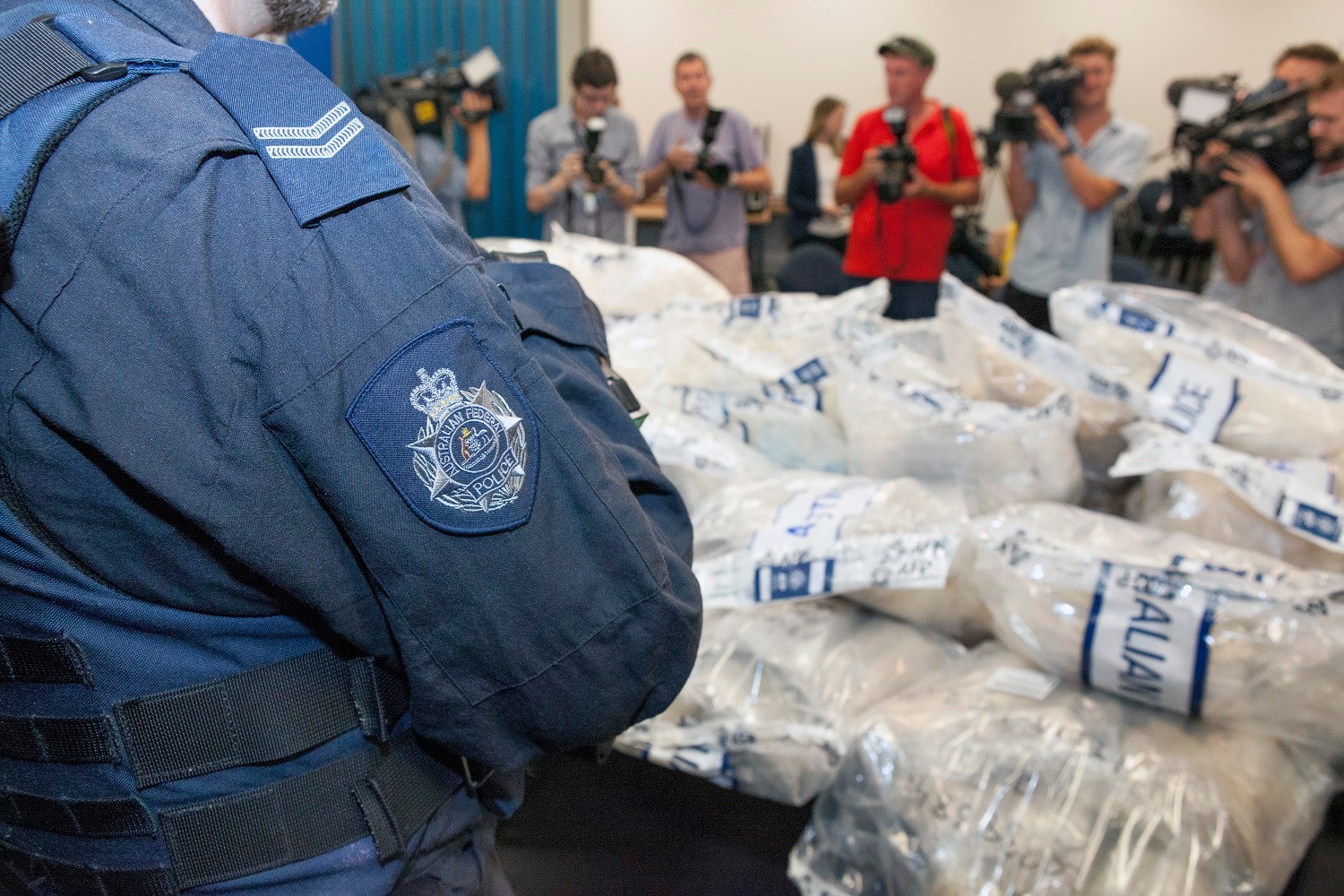
Earlier this week, the minister for justice, Michael Keenan, formally released the Commonwealth Law Enforcement International Engagement Methamphetamine Disruption Strategy. The Australian Federal Police (AFP)–led strategy is meant to provide ‘the framework for the Australian Government’s international engagement to disrupt the supply of crystal methamphetamine (“ice”) and its precursors to Australia’. However, it’s short on new ideas and doesn’t provide enough resources for new law enforcement initiatives in the international operating environment.
The strategy identifies the international engagement that Australian government agencies will support to implement the National Ice Action Strategy. That approach involves leveraging ‘existing resources and programs’ through improved coordination rather than implementing any new or innovative initiatives.
Australia’s ice problem, although complex, can be summarised simply. A large proportion of Australians (by global standards) use ice—and they do so frequently. Despite law enforcement agencies’ record seizures, the price of ice for Australian users is statistically stable, and the drug’s availability is spreading from capital cities to bush towns. From street dealers to global organised crime syndicates, there are big profits to be made in Australia’s ice market. Australia’s families and communities are feeling the effects of the problem daily.
The new framework focuses Commonwealth law enforcement agencies’ international engagement on four pillars: understanding the international environment, enhancing law enforcement and border security cooperation, delivering targeted capacity-building and capability development, and maximising advocacy and political engagement.
For the most part, those focal areas are indeed best practice, and, not surprisingly, they’re already priorities for the agencies involved. Arguably, the strategy directs Commonwealth law enforcement agencies, like the AFP and the Australian Border Force (ABF), to do more of what they’re already doing, while their operating budgets shrink.
Although Australia’s law enforcement agencies, including the AFP and ABF, achieve outstanding operational results, they’re not reducing the availability of ice in our communities. In its latest illicit drug data report, the Australian Criminal Intelligence Commission (ACIC) found that, for the most part, the purity of illicit drugs is unchanged, drugs remain easy to obtain and, in some cases, the street price is dropping not increasing. Those findings can almost certainly be attributed to shortcomings in policy and strategy settings rather than in operational efforts. If our law enforcement agencies are to disrupt the supply of ice in Australia, they’ll need a solid strategy—one that’s focused on achieving clearly articulated, ambitious, yet achievable, goals.
There seems to be little doubt that an effective disruption strategy will require the government to further internationalise its law enforcement activities. International engagement, including cooperation and capacity development, has become a central pillar in AFP, ACIC and ABF strategies. To date, each agency has operated its own international network and engagement strategy. While those efforts have often been mutually supportive, it hasn’t always been clear how they combine to support the national interest. That point is supported by this latest strategy’s call for greater collaboration. I would argue that the time for domestic collaboration has passed, and perhaps a fully integrated international engagement strategy is needed.
Expanding our law enforcement partnerships with ASEAN member states and China will be the key to having a meaningful effect on the ice supply—and that has real resource implications. The new strategy needs to be resourced appropriately if it’s going to work. For several years, the AFP’s network of officers deployed overseas has been shrinking, in both staff numbers and budget. It’s true that over this period the AFP has established new taskforce arrangements with local authorities in China, Cambodia and Thailand. Nonetheless, those arrangements often involve reallocating existing resources away from other operational activities, and occur against a backdrop of staff drawdowns.
To have a lasting impact on the availability of ice, Australia needs to address the diversion of drugs and precursors in the Chinese chemical and pharmaceutical industries. The strategy’s fourth pillar—‘maximise advocacy and political engagement’—offers the promise of increased access to more diverse diplomatic policy levers that could be synchronised with law enforcement action. The Department of Foreign Affairs and Trade (DFAT) will need to be an integral partner for that to be fully effective.
The strategy’s implementation will be overseen and monitored by an interagency working group. However, developing the international law enforcement engagement measures that Australia needs will probably require greater cooperation and coordination than that offered by a working group convened quarterly. The government should consider setting up a small team in the soon-to-be-established Home Affairs portfolio to work with the ACIC, AFP, DFAT, AUSTRAC and ABF on developing innovative new strategies for regional offshore disruptions.
But let’s be frank: even with new ideas and additional resources, it’s going to take time and a lot of effort to reduce the supply of ice to Australia. In the interim, disruptions of international ice ventures should be viewed as tactical police successes rather than evidence of the effectiveness of our strategies and policies. There’s a world of difference between seizing large quantities of drugs and shutting down global illicit drug supply chains.

